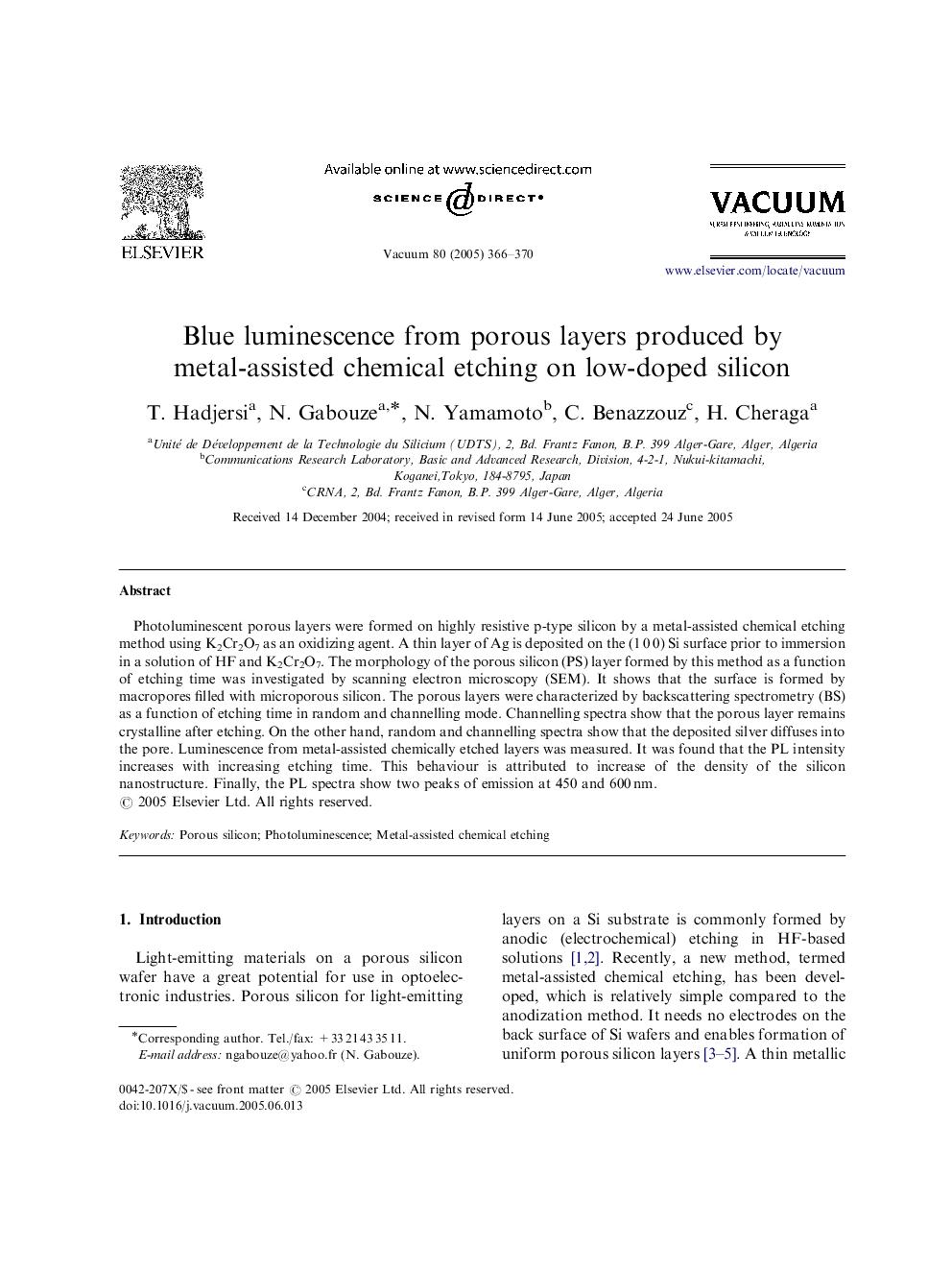| Article ID | Journal | Published Year | Pages | File Type |
|---|---|---|---|---|
| 10676165 | Vacuum | 2005 | 5 Pages |
Abstract
Photoluminescent porous layers were formed on highly resistive p-type silicon by a metal-assisted chemical etching method using K2Cr2O7 as an oxidizing agent. A thin layer of Ag is deposited on the (1Â 0Â 0) Si surface prior to immersion in a solution of HF and K2Cr2O7. The morphology of the porous silicon (PS) layer formed by this method as a function of etching time was investigated by scanning electron microscopy (SEM). It shows that the surface is formed by macropores filled with microporous silicon. The porous layers were characterized by backscattering spectrometry (BS) as a function of etching time in random and channelling mode. Channelling spectra show that the porous layer remains crystalline after etching. On the other hand, random and channelling spectra show that the deposited silver diffuses into the pore. Luminescence from metal-assisted chemically etched layers was measured. It was found that the PL intensity increases with increasing etching time. This behaviour is attributed to increase of the density of the silicon nanostructure. Finally, the PL spectra show two peaks of emission at 450 and 600Â nm.
Related Topics
Physical Sciences and Engineering
Materials Science
Surfaces, Coatings and Films
Authors
T. Hadjersi, N. Gabouze, N. Yamamoto, C. Benazzouz, H. Cheraga,
